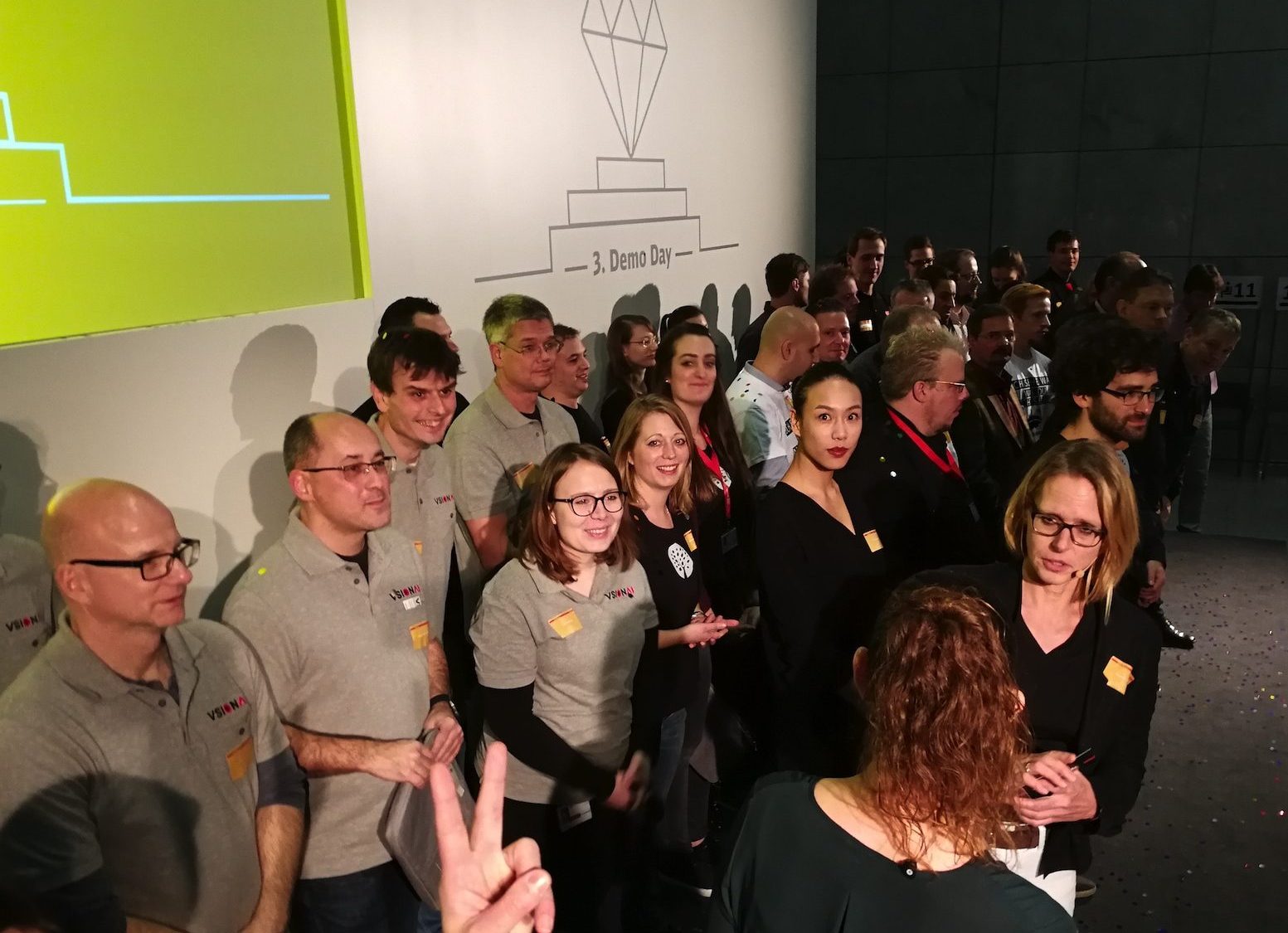Staying relevant for customers is the key challenge facing any company that wants to maintain its competitiveness in today’s market. That’s why ‘innovation’ has become the most commonly used buzzword of our time. But how does innovation actually look like? What are companies doing to drive innovation? One of their strategies is to implement intrapreneurship programmes (IPP). Everyone’s heard of them, many companies are doing them, but not everyone knows how to do them well. We at RCKT Next, a Berlin-based Digital Consultancy, don’t quite have a miracle recipe but we have gathered some valuable insights throughout our experience in designing and executing IPPs for many of our corporate clients. Here are our 5 insights:
1. READINESS
Most of the IPPs either have one of the following goals or all of them combined in one IPP: this would be building new business models, improving existing products, or training employees to learn new skill-sets. Either way, the most common mistake is to establish a programme without considering whether the employees within the company are ready to fulfill that challenge yet.
- Challenge 1: teams don’t have a founder spirit and mindset to successfully develop their ideas which quickly results in intrapreneurs feeling overwhelmed during the IPP.
- Challenge 2: programme owners have an even harder time to meet their KPIs and corporations don’t receive the expected outcomes of their investment.
Solution idea 1: focus on the culture part as well when designing your IPP to empower your teams to act and think like a startup. Solution idea 2: design another programme which solely focuses on educating your organisation about the meaning of an “innovation culture”. This includes questions about digitalisation in general and how they can take part of this change.
2. CHOICE OVERLOAD
There are plenty of examples of companies who are highly ambitious in their innovation activities, which is, of course, not bad per se. Nevertheless, this can go wrong when, for instance, many different programmes have been established but there’s no communication of what these are specifically about. Let’s look at an example of a company that has five different programmes in which internal or external teams can participate. What could be the problem here?
- Challenge 1: programme owners know their goals, but other people might be overwhelmed with the selection of choices and might not know which programme fits their ideas best.
- Challenge 2: teams might find themselves misplaced during the process, leading to a drop in motivation and an increase in frustration.
- Challenge 3: teams might speak badly of the programmes and thereby discourage others from applying to further batches.
- Challenge 4: programme owners may not be able to deliver positive results, which can make it difficult to maintain a good reputation of their programmes.
Solution idea: help teams to make the right choice by clearly communicating what your programme is aiming to achieve, e.g. through small campaigns, informative events, or interactive programme advisors that ask simple questions about teams’ business ideas, idea status, team set-up etc., before giving teams a recommendation for the programme that suits them best.
3. DO NOT WORK IN SILO
This is a common sentence we keep reading everywhere. Think collaboratively, work interdisciplinary, break silos. Even though we don’t want to hear them anymore, these buzzwords do actually make a lot of sense. This also applies to IPPs that work without external experts. In many cases, the programme is designed (in modules) and executed (through coaching) by company employees only. What opportunities could be missed here?
- Challenge 1: programme owners miss out on external best cases of programme design, such as the necessary methods and modules to empower intrapreneurs, and the best ways, resources, and processes to ensure programme efficiency.
- Challenge 2: teams work in a bubble, the safe corporate bubble. They are used to set structures and can’t break out of their habits without exposure to external expertise, e.g. startup thinking and agile working styles.
- Challenge 3: teams might need experts with a specific skill-set to continue with their business idea. Most of the time these experts do not exist within the company or they do exist but teams simply don’t know how to find them.
Solution idea 1: hire external coaches, such as venture architects, for your workshops to expose teams to new methods being used outside of the company. Solution idea 2: each team typically has one mentor (a company employee) who supports them throughout the process. In addition to that, an external coach could add tremendous value thanks to their outside perspective. The combination of a mentor with in-depth knowledge of the company and a coach with extensive experience on the external market, creates a strong partnership with which to support the teams. Solution idea 3: provide an online platform curated for the programme that makes it easy for everyone to collaborate. This could involve getting input from other teams, fostering interaction so that teams can learn from each other, or finding in-house and external experts.
4. DON’T LET GREAT IDEAS DIE
Depending on the goal of IPPs, programme owners frequently face great teams and ideas but still can’t proceed with their business models for a variety of reasons. The most common programme design is as follows: ideation phase, incubation phase, venturing phase. During these phases, teams have milestones to fulfill: they are evaluated, and based on several different criteria, it is then decided whether or not they can stay in the process. What has to be challenged here?
- Challenge: most programmes only have one exit channel, such as a venture case, which means there’s a criteria catalogue that teams have to meet. However, what happens to those ideas that have high potential but do not meet the criteria of being a venture case, even if they represent great potential for optimisation of other existing products or processes within the company?
Solution idea 1: in case you only have one IPP, think of different processes to handle great ideas after a team has been eliminated from the programme. This could include directing them to other departments that would highly benefit from the solution. However, it’s important that the programme owners stay involved to ensure the teams and the department are not overwhelmed or left alone with the process. Solution idea 2: if you have many different IPPs that differ in their goals, these programmes themselves can serve as exit channels. For example: IPP 1 aims to build a venture case while IPP 2 aims to improve existing products. In this case, we’d urge you to think about an option that allows all teams, regardless of their ideas, to participate in the same process at the beginning (e.g. a 3 week ideation phase), before assigning them to the right programme – IPP 1 or IPP 2. If a great idea doesn’t fit into either of the programmes then go back to solution idea 1.
5. CREATE SOME BUZZ
Last but not least, create some buzz around your IPP. Most of the time, programme owners focus solely on improving the IPP design – for example, through the optimisation of workshop topics and methods or changing coaches etc.. This results in a constantly improved quality of IPPs after each passing batch. What is the problem here?
- Challenge 1: programme quality increases but, due to lack of a profound communication strategy during the scouting stage, no one knows about the IPP so only a few teams apply. Programme owners often end up accepting all teams that have applied for lack of better options. This is even more dangerous when teams are of a low quality to begin with and still get accepted due to the circumstances. It goes without saying that the IPP KPIs might be even harder to meet.
- Challenge 2: some IPPs also accept externals to participate as team members, yet receive no applications as people don’t hear about these initiatives on external platforms.
- Challenge 3: sometimes communication strategies exist but they only focus on raising internal awareness. The opportunity to use external communication to stage an IPP as a company’s great innovation activity, either for employer branding purposes or market positioning, is often neglected.
Solution idea 1: have a clear idea of whom you want to reach (target group) for your IPP and analyse where (channels) to reach them best, e.g. intranet, lunch area or email newsletters to reach internal people, or selected media outlets for external awareness. Based on these findings, develop a communication strategy with specific measures, such as posters, merchandise, articles, events, interviews, or even build a new website. Solution idea 2: get testimonials, for example, from former teams, and share your achievements and learnings both internally and externally. It not only promotes your IPP but showcases the success or learnings of your initiative.
CONCLUSION
Conquering all these challenges isn’t easy. However, IPPs with a holistic view on mindset, clear goals, exit channels, as well as external collaborations and internal/external communications are laying an important strategic groundwork. Again, this is not a miracle recipe for designing and running a successful IPP, since every company has different goals and regulations to follow. One thing we, as programme owners, have in common is that we are all still in the process of learning how innovation works best. And since approaches differ and no one has the winning formula, we all need to test, learn, and iterate, just as our intrapreneurs do.
Author: Gin Wa Poon

